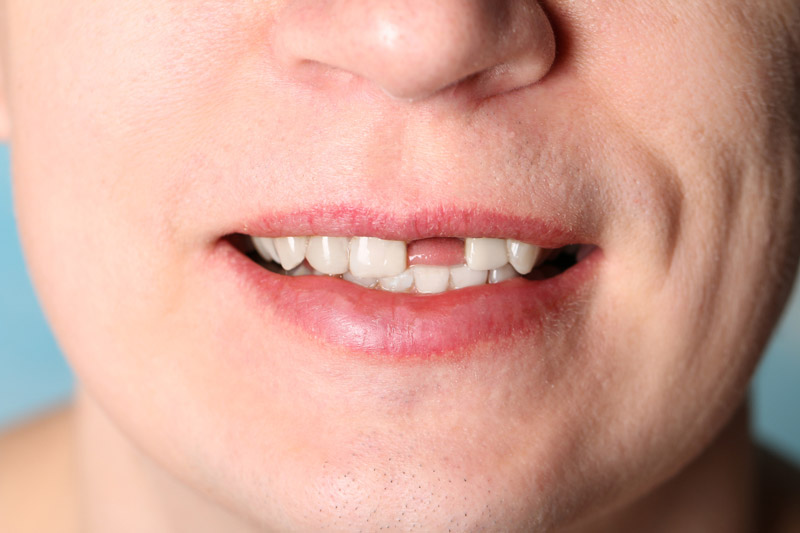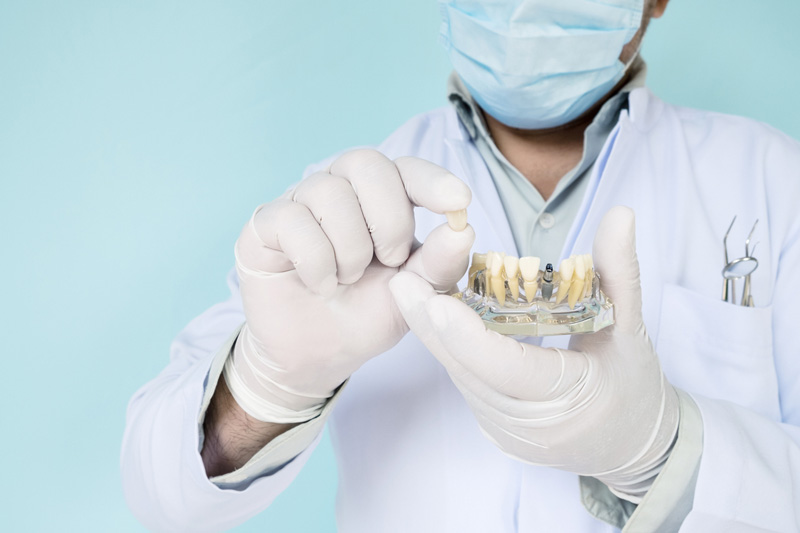Replace Missing Front Tooth: What Are the Best Options in 2019?

You Won’t Have to Live Life with a Gap for Long
All of the permanent solutions to replace a missing tooth requires time in order to create a natural-looking tooth. Naturally, you are not going to want to continue about your day at work or in public with a gap in your teeth on show, and there are ways around this. The majority of dentists will have the tools and skills necessary to fit you with a temporary removable denture. These can be a bit uncomfortable and could take some getting used to, but at least you won’t have to wait until the permanent replacement is ready before covering the gap.
With the skills and training that dentistry professionals receive your replacement tooth should be undetectable and look completely natural. There are three main options when it comes to permanent replacements all of which are detailed below.
Removable Denture
A removable denture is available in two forms: as a removable complete denture or a removable partial denture. They work very much as their names suggest with a removable partial denture being used to replace one or a small area of absent teeth. A removable partial denture can, of course, be removed as and when desired. This particular type of tooth replacement is the least expensive, but they aren’t as durable as other options.
The removable complete denture works in the exact same way as the partial one; however, rather than being used for a small area it is used for the majority or even all of the teeth. Acquiring a complete denture can be a slightly lengthy process as several trips to the dentist is needed to ensure that the fit is perfect. Both complete and partial removable dentures have been reported to feel uncomfortable in the mouth. Overall, the dentures have a fantastically natural look to them that blends in with the other teeth beautifully.
Dental Implant
Choosing a dental implant is the closest you could get to having your tooth back. A dental implant is an artificial tooth that is perfectly molded to the space where it is designated. Dental implants are then secured/screwed into place resulting in a sturdy and longstanding set of teeth. Once the new tooth has been fitted, the next part is for a crown to be placed that will smooth the finish and help the implant to match the color and shape of the surrounding teeth. There are three components to a dental implant. The bio-compatible titanium plate which is fixed straight into the bone, the porcelain crown that covers the surface area of the implant, and the abutment which is what connects the crown to the implant. Generally speaking, a dental implant should last for life as it is implanted and fused with any surrounding bone which extends its durability and ensures that it is secure. If you feel that a dental crown is the best option for you, then please be aware that there is an expected healing time of around three weeks.
Bridges
Bridges are fairly similar to dentures; however, they are attached to neighboring teeth. There are two types of bridge replacement options available with one being more suited to absent front teeth than the other.
Resin-bonded Bridge
A resin-bonded bridge is one of the lesser-known replacement options, yet it is usually available at a much lower cost than some of the other options. In order to be viable for a resin-bonded bridge, the adjacent teeth need to be healthy. Because this type of bridge is slightly less durable, it is an ideal solution for replacing a missing front tooth as there is generally less pressure on the front teeth. The procedure is a non-invasive one and tends to look much more natural than that of dentures.
Fixed Bridge
This method requires a more invasive technique and performs the role of bridging the gap that is left from the missing tooth. It can be made from various materials including alloys, gold, porcelain, and sometimes a combination. Like the resin-bonded bridge, the fixed bridge relies on support from the surrounding, natural teeth. The primary issue with a fixed bridge is that prep is needed on the neighboring teeth if they are healthy. This means that the healthy teeth that will be used to attach the fixed bridge will need to have the surface shaved slightly in order to acquire a sufficient grip. You may well agree that by shaving the surface of otherwise healthy teeth, the condition of them will be compromised. Fixed bridges are recorded to last a long time and, like that of the resin-bonded bridge, they have a very natural finish.
Still Have the Tooth?
In the event of knocking a tooth out, you should contact your dentist immediately and arrange an emergency appointment. If you still have the tooth take it with you as there may be a small possibility that the tooth can be saved. Even if the missing tooth has gone, you should still contact a dentist immediately so that they can inspect the area and make sure that there isn’t any debris that could inflame the gums.
Depending on how the tooth fell out, there could be other options available. The best thing to do is to see a dentist so that they can examine the area and suggest the most beneficial options for you.
Relate Posts to Read:
Cracked Front Tooth? Here Are Five Things You Should Do Right Away

